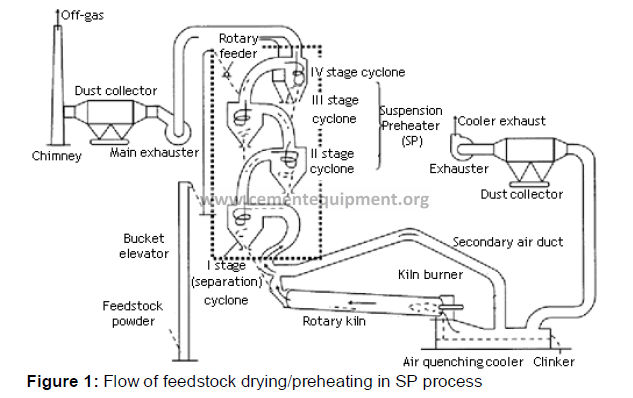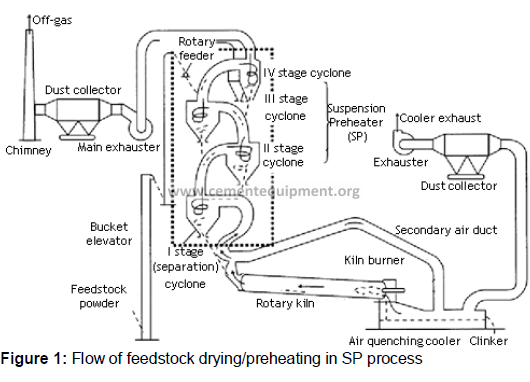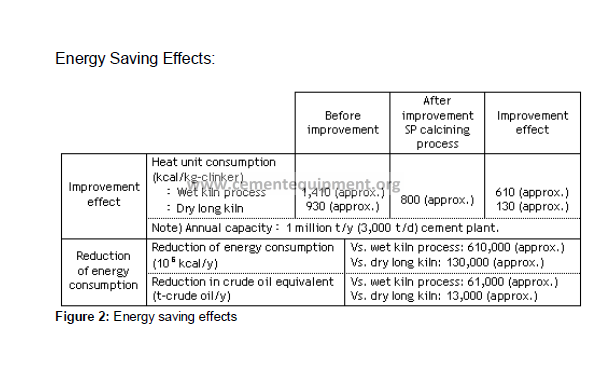Contents
Energy efficiency in Cement production –
Calcining process – Suspension preheater
(SP)

[wpecpp name=”package + Updates forever” price=”250″ align=”center”]
Improvement by the SP-type cement calcining process is a technology, which replaces the
conventional wet calcining and dry long kiln processes. In comparison with these two
conventional types, the SP process achieves a large energy saving. The SP process improves
calcining efficiency by drying and preheating the feedstock using the kiln exhaust gas (waste
heat). The system, which recovers this waste heat, is a suspension-type cyclone process; this is
the tall structure, which is clearly visible in cement works.
The distinctive feature of the SP process is the fact energy consumption in the calcining process
is reduced by utilizing the high temperature hot blast (waste heat) after calcining the meal in the
kiln to dry the feedstock and preheat the meal before calcining in the kiln. In comparison with
this, the wet calcining process and the dry long kiln process both have the disadvantage of high
energy unit consumption. In the SP process, cyclones are installed in stages. A process
comprising 4 cyclones is called a 4-stage SP kiln system; similarly, a process with 5 cyclones is
called a 5-stage SP kiln system. The final discharge gas temperature in a 4-stage SP system is
350-380°C.
This gas is normally used in waste heat recovery power generation. With a 5-stage system, the
final temperature is 250°C. As this is low-to-medium temperature waste heat, it cannot be used
in power generation, but 5-stage process has the merit of reducing the release of high
temperature off-gas into the environment. The kiln exhaust gas used in the SP is extracted by a
duct installed in the kiln, and is then conveyed to the lowest cyclone in the SP system. The
cyclones are connected internally so the extracted exhausted gas flows into the upper cyclones
while exchanging heat with the fine material residing in the cyclone, thus preheating the
material. The preheated material is then calcined in the kiln.
Details of Improvement: Figure 1 shows the flow of the feedstock drying and preheating system
in the SP process.

